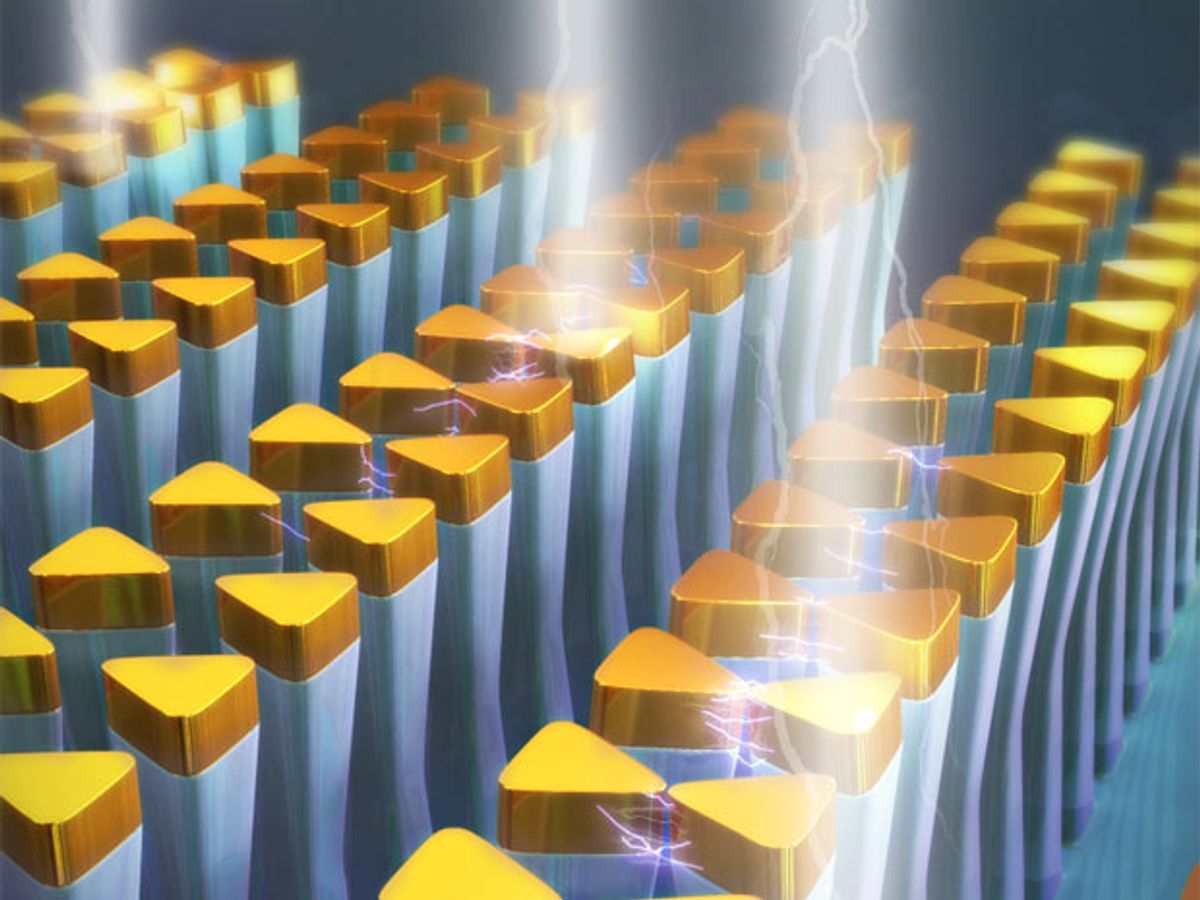Recent experiments have shown that placing these plasmonic nanoantennas on top of glass pillars enhances their power for sensor applications, such as fluorescence enhancement in biochemical sensing. Now researchers at the University at Illinois have discovered that this high perch for the nanoantennas introduces mechanical properties into the system that can be tuned and manipulated.
In research published in the journal Nature Communications, the Illinois team took an array of bow-tie shaped nanoantennas and showed that by using a scanning electron microscope (SEM) that gap sizes between each half of the bow tie (as illustrated in the image above) for each nanoantenna could be reduced down to 5 nanometers. This represents a factor of four times smaller than what is attainable with electron-beam lithography.
This tuning of the gap sizes alters the plasmonic effect of the nanoantenna and thereby changes its optical properties, such as molecular fluorescence for use in biochemical sensing.
“On a fundamental level, our work demonstrates electron-beam based manipulation of nanoparticles an order of magnitude larger than previously possible, using a simple SEM operating at only a fraction of the electron energies of previous work,” said Brian Roxworthy, the first author of the research, in a press release.
In addition to tuning the optical response of the antennas down to each specific nanoantenna in an array by altering the plasmonic effect generated by the passing of electrons, the use of the SEM could be helpful in areas such as particle manipulation, which is an area in which plasmonics has recently had an impact with “optical tweezers.”
“Our fabrication process shows for the first time an innovative way of fabricating plasmonic nanoantenna structures under the SEM, which avoids complications such as proximity effects from conventional lithography techniques,” Bhuiya said. “This process also reduces the gap of the nanoantennas down to ~5 nm under SEM with a controlled reduction rate. With this new fabrication technique, it opens an avenue to study different phenomena which leads to new exciting research fields.”
“Our fabrication process shows for the first time an innovative way of fabricating plasmonic nanoantenna structures under the SEM, which avoids complications such as proximity effects from conventional lithography techniques,” Bhuiya said. “This process also reduces the gap of the nanoantennas down to ~5 nm under SEM with a controlled reduction rate. With this new fabrication technique, it opens an avenue to study different phenomena which leads to new exciting research fields.”
“Our fabrication process shows for the first time an innovative way of fabricating plasmonic nanoantenna structures under the SEM, which avoids complications such as proximity effects from conventional lithography techniques,” said Abdul Bhuiya, one of the researchers, in a press release. “With this new fabrication technique, it opens an avenue to study different phenomena which leads to new exciting research fields.”
Dexter Johnson is a contributing editor at IEEE Spectrum, with a focus on nanotechnology.




